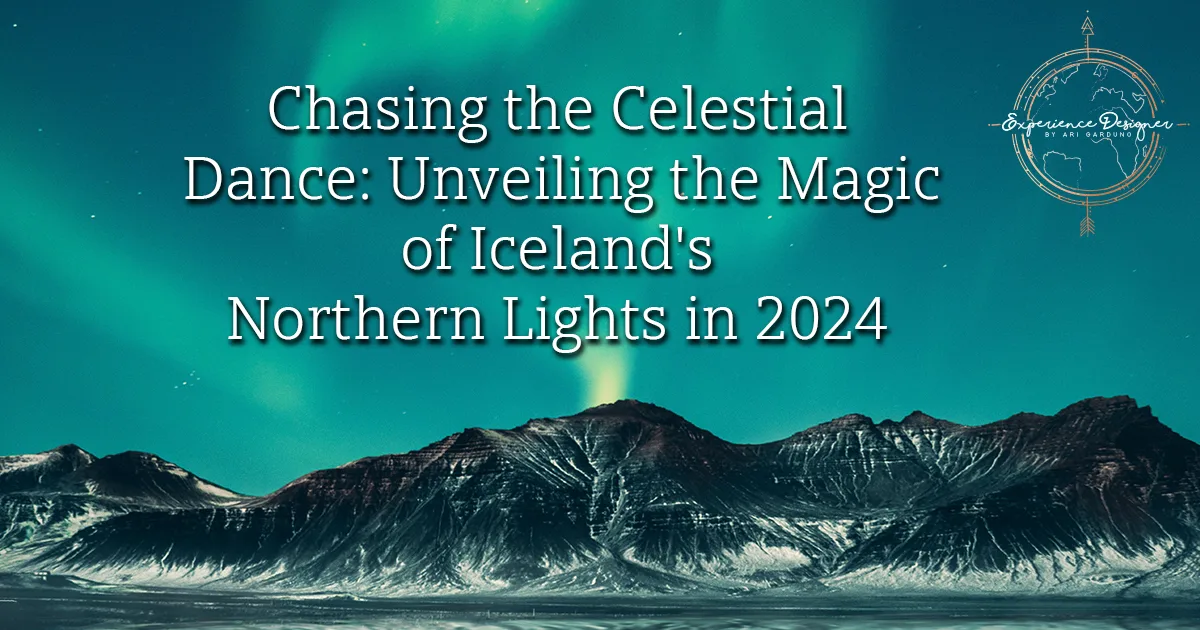
Chasing the Celestial Dance: Unveiling the Magic of Iceland’s Northern Lights in 2024
Imagine yourself standing beneath a sky ablaze with vibrant ribbons of color, emerald green, fiery reds, and streaks of celestial violet. This isn’t a scene from a sci-fi movie; it’s the awe-inspiring spectacle of the Northern Lights, also known as the Aurora Borealis, dancing across the canvas of Iceland’s night sky.
For many, witnessing this natural phenomenon ranks high on the travel bucket list. And there’s no better time to plan your Icelandic adventure than in 2024, a year predicted to be exceptional for Northern Lights viewing thanks to a surge in solar activity.
This ultimate guide will equip you with everything you need to know to witness Iceland’s Northern Lights extravaganza in all its glory.
Why Iceland Should Be Your Northern Lights Destination in 2024
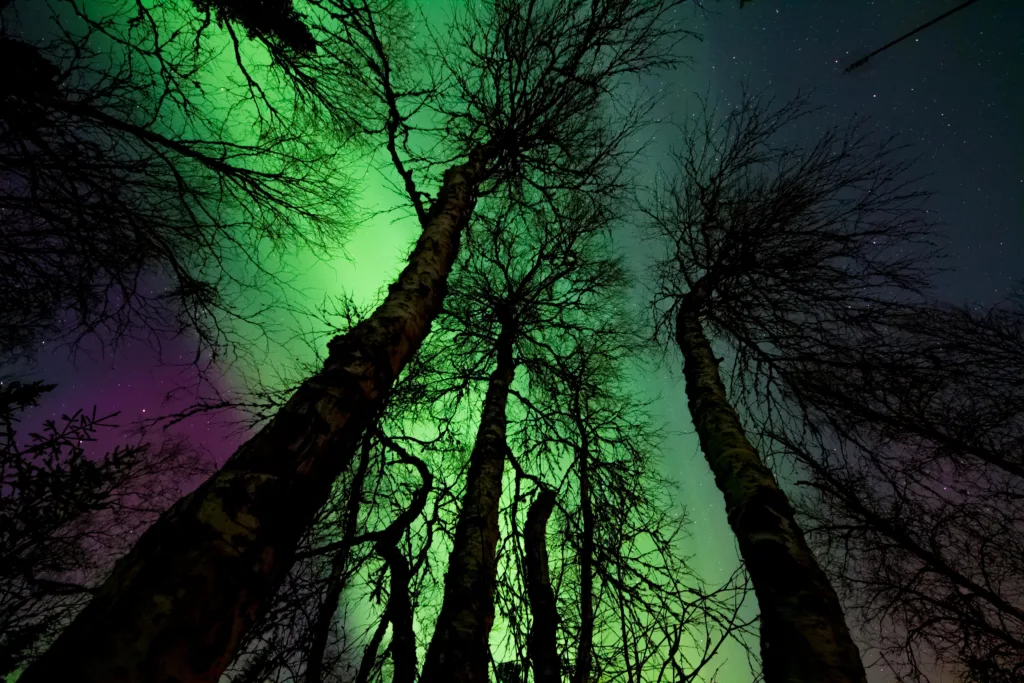
Iceland isn’t just another pretty destination with a chance of catching the Northern Lights. Here’s what sets it apart:
- Prime Location: Iceland sits directly below the Auroral Oval, a zone encircling the Arctic where the Northern Lights are most frequently visible. This positioning significantly increases your chances of witnessing a spectacular light show.
- Minimal Light Pollution: Iceland boasts vast stretches of untouched wilderness with minimal light pollution, offering unobstructed views of the celestial display.
- Otherworldly Landscapes: Imagine witnessing the Northern Lights dance over glaciers, mountains, and dramatic fjords. Iceland’s stunning natural beauty creates a truly unforgettable backdrop for your aurora borealis adventure.
- 2024: A Peak Year for Solar Activity: Scientists predict 2024 to be a year of heightened solar activity, leading to more frequent and impressive Northern Lights displays.
Understanding the Science of the Northern Lights
At the heart of the Northern Lights phenomenon lies the interplay between solar activity and Earth’s magnetic field. As explained by physicists and astronomers, the Solar Maximum—a peak in solar activity occurring approximately every 11 years—ushers in a period of heightened auroral displays. The Solar Maximum’s significance, predicting that 2024-2025 will offer the most frequent and impressive Northern Lights displays in over a decade.
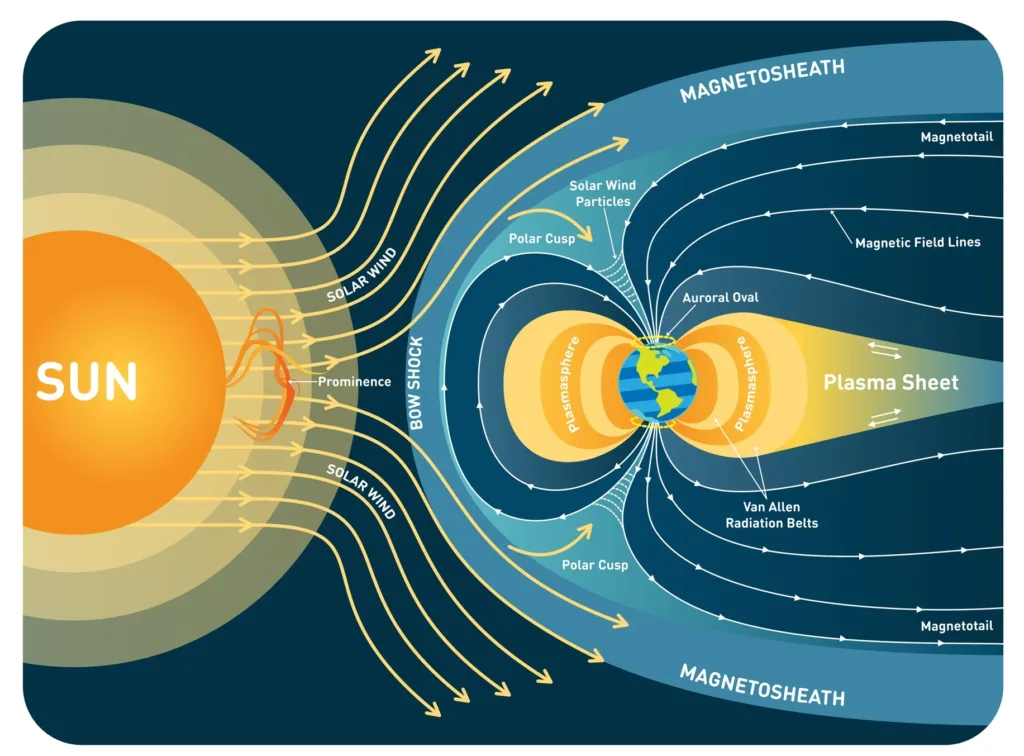
Maximizing Your Northern Lights Experience
To capitalize on the Solar Maximum’s potential, strategic planning is essential. Begin by selecting the optimal viewing location—Reykjavik, Iceland’s vibrant capital, serves as an excellent base for Northern Lights excursions. Explore the outskirts of Reykjavik or venture into Iceland’s remote regions for unobstructed views of the aurora borealis against breathtaking natural backdrops.
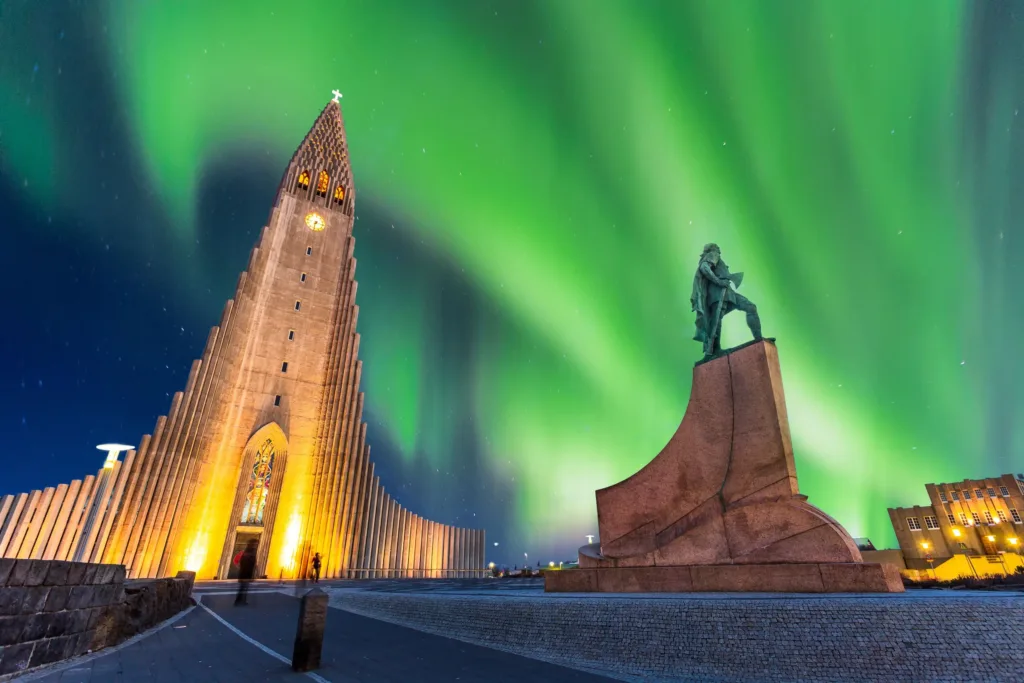
Where to See the Northern Lights in Iceland
While the Northern Lights can be glimpsed from various locations in Iceland, some spots offer a distinct edge:
- Reykjavik Vicinity: Iceland’s vibrant capital city serves as a convenient base for Northern Lights tours. Just a short distance from the city center, you’ll find yourself enveloped in the darkness needed for optimal viewing.
- Snæfellsnes Peninsula: Nicknamed “Iceland in Miniature” for its diverse landscapes, Snæfellsnes Peninsula offers a breathtaking backdrop for the Northern Lights. With dramatic cliffs, volcanic craters, and glaciers, it provides a truly magical setting.
- Westfjords: For the ultimate off-the-beaten-path experience, head to Iceland’s Westfjords. Here, you’ll be surrounded by dramatic landscapes with minimal light pollution, maximizing your chances of witnessing a dazzling display.
- Akureyri: Iceland’s second-largest city, Akureyri, boasts stunning scenery and offers a good base for exploring North Iceland, known for its clear skies and frequent aurora displays.
- Jökulsárlón Glacier Lagoon: Imagine the Northern Lights shimmering above a glistening glacier lagoon filled with icebergs. Jökulsárlón offers a truly unique and unforgettable aurora borealis experience.
When is the Best Time to See the Northern Lights in Iceland?
The window for witnessing the Northern Lights in Iceland stretches from late August to mid-April. However, the prime viewing season falls between September and March when longer nights and darker skies create the perfect canvas for the aurora borealis.
Here are some additional tips for maximizing your chances of seeing the Northern Lights:
- Target evenings: The Northern Lights are most active between 5 pm and 2 am. Plan your evenings for sky gazing during these times.
- Seek out clear skies: Cloud cover can obscure the view. Check local weather forecasts beforehand and be flexible with your viewing schedule.
- New Moon Magic: Aim for your trip to coincide with a new moon, as minimal moonlight enhances visibility of the aurora borealis.
Maximizing Your Northern Lights Experience with Technology
Modern technology can be your ally in your quest to witness the Northern Lights. Download the “Aurora Forecast” app, a handy tool that provides real-time information on aurora activity. This app helps you pinpoint the best viewing locations in Iceland, both in Reykjavik and beyond. With the app at your fingertips, you can stay updated on aurora forecasts, geomagnetic activity, and optimal viewing times, ensuring a seamless and unforgettable Northern Lights experience.
Beyond the Northern Lights: Adventures Await in Iceland
Iceland’s magic extends far beyond the Northern Lights. This captivating island nation boasts a plethora of natural wonders waiting to be explored, including:
- Glaciers and Ice Caves: Explore the majestic glaciers of Vatnajokull National Park or venture into the otherworldly beauty of Iceland’s ice caves.
- Black Sand Beaches: Witness the dramatic contrast of black sand beaches against the powerful Atlantic Ocean.
- Volcanoes: Hike dormant volcanoes like Snæfellsjökull or stand in awe of the geothermal wonders in Geysir geothermal area.
- Waterfalls: Iceland is a land of cascading beauty. Witness the power of Gullfoss, the delicate Seljalandsfoss, or the ethereal Dettifoss, Europe’s most powerful waterfall.
- Natural Hot Springs: Immerse yourself in the warm, geothermally heated waters of Iceland’s many natural hot springs, the perfect way to unwind after a day of adventure.
- Thriving Culture: Despite its remote location, Iceland boasts a rich and vibrant culture. Immerse yourself in Reykjavik’s art scene, explore charming villages, or sample the island’s unique cuisine.
Leveraging Technology for Optimal Viewing
In the digital age, technology plays a pivotal role in enhancing the Northern Lights viewing experience. Download the “Aurora Forecast” app to access real-time information on aurora activity and pinpoint the best viewing spots in Reykjavik and beyond. Stay informed about aurora forecasts, geomagnetic activity, and optimal viewing times, ensuring a seamless and rewarding Northern Lights adventure.

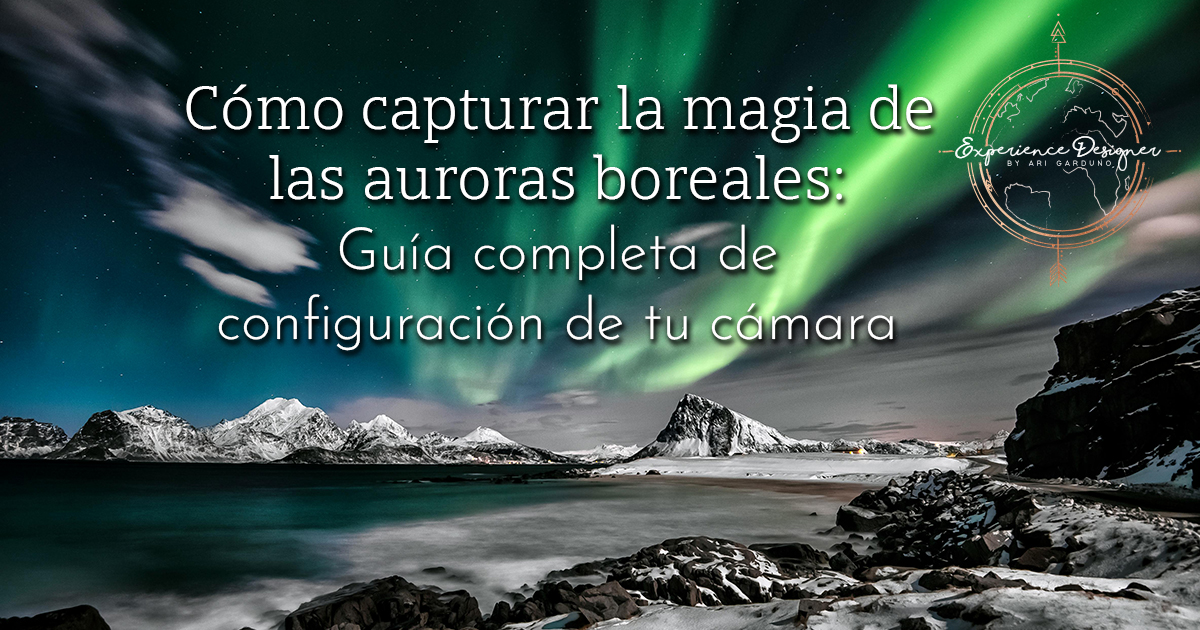

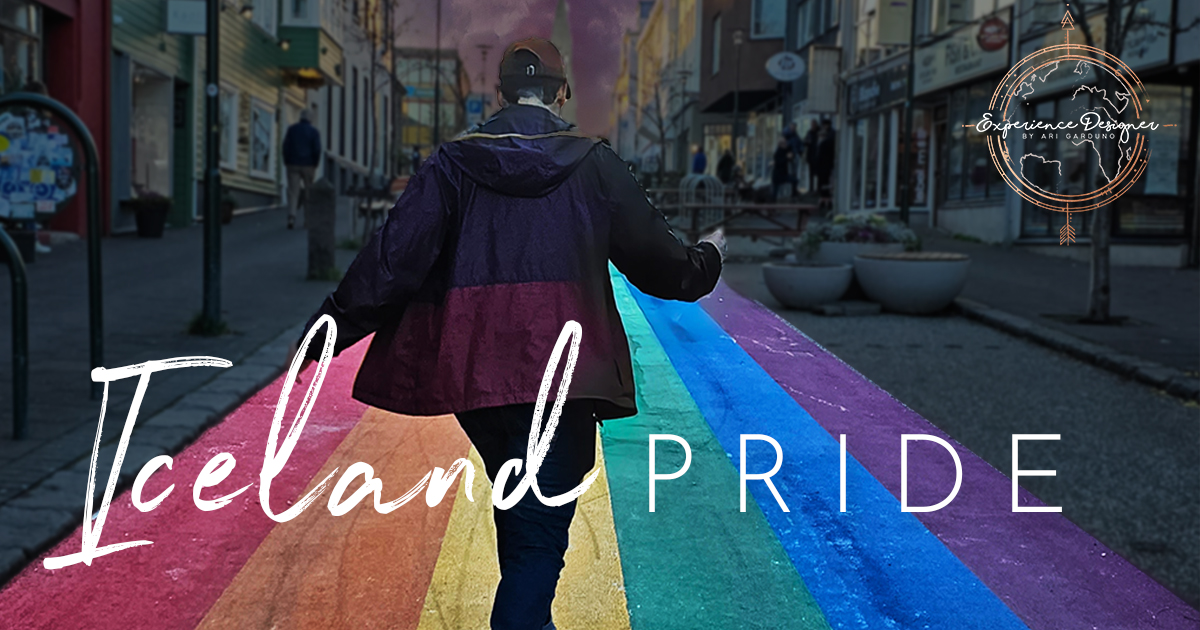


Leave a Reply